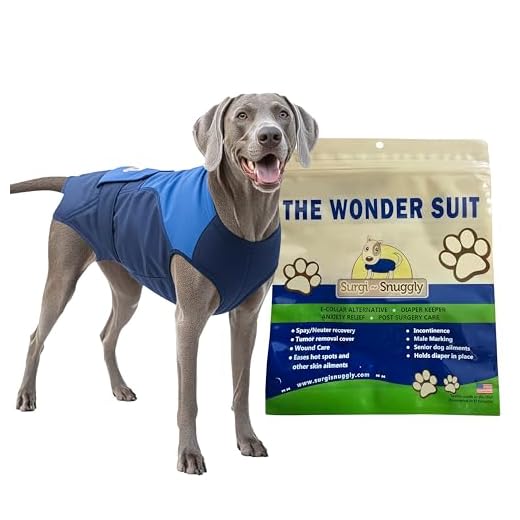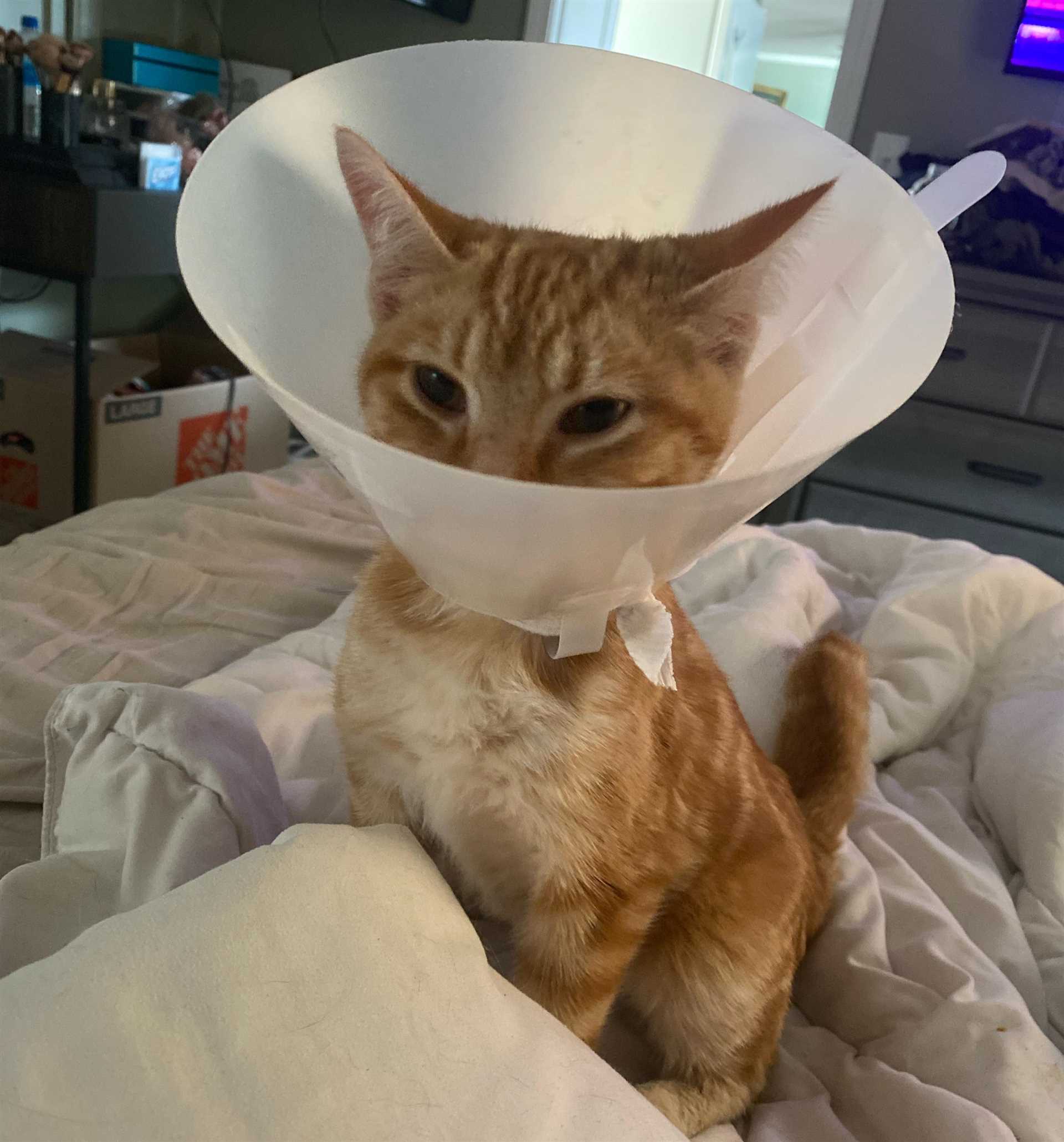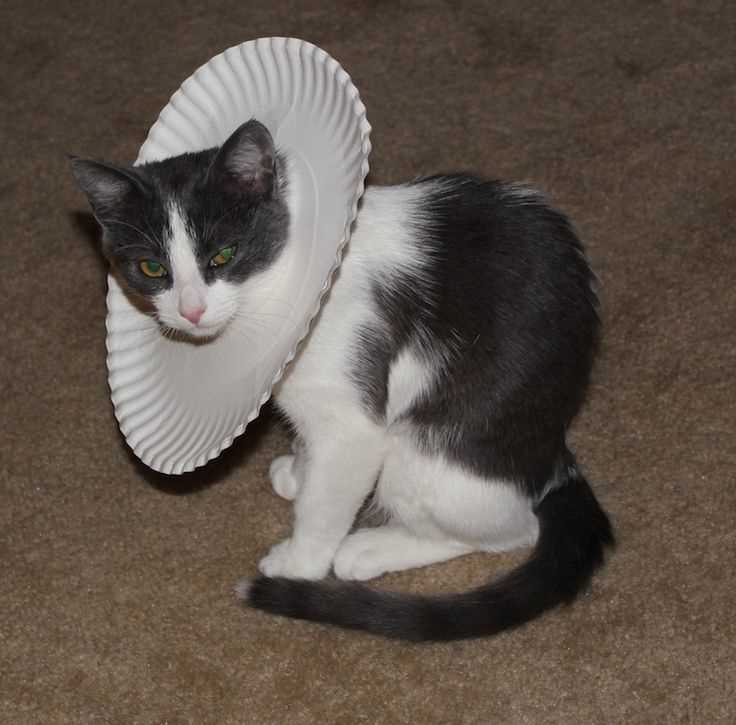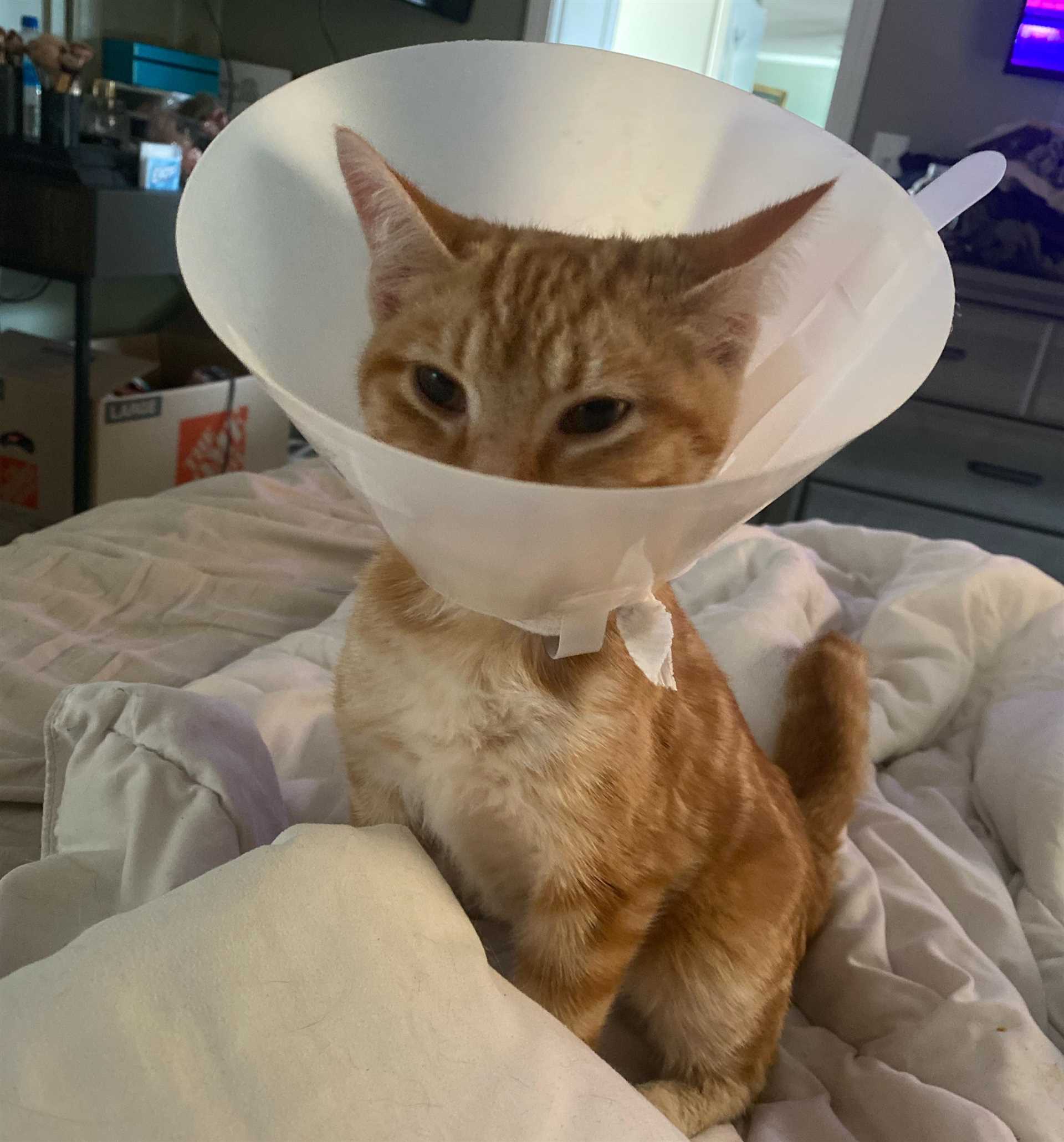



It’s crucial to keep that protective collar on for at least 10 to 14 days following a surgical procedure. This duration allows for proper healing of the incision site and minimizes the risk of complications. If you notice any signs of discomfort or irritation, consult a veterinarian immediately.
The collar might seem uncomfortable, but it serves an important purpose. It prevents the little ones from licking or biting at their stitches, which could lead to infection or other serious issues. During the recovery period, I recommend closely monitoring their behavior and ensuring they aren’t trying to remove it.
After the two-week mark, a check-up with a vet is advisable. They will assess the healing process and determine if it’s safe to remove the collar. If all is well, your furry companion can finally enjoy unrestricted movement once again!
Duration for the Elizabethan Collar Post-Procedure
Keep the collar on for at least 10 to 14 days. This timeframe allows for proper healing of the incision. My human monitored my recovery closely during this period, ensuring I didn’t lick or irritate the area.
If the stitches are absorbable, they typically dissolve within 10 to 14 days. For non-absorbable ones, a follow-up visit is necessary to have them removed. In such cases, maintaining the collar until the vet visit is essential.
Pay attention to my behavior. If I seem excessively agitated or if the collar causes significant distress, consult a veterinarian. They might suggest alternatives, such as a softer recovery suit.
Always ensure the collar fits snugly but allows me to breathe comfortably. A proper fit prevents it from slipping off while still keeping me safe from any self-inflicted harm.
Once the healing process appears complete and the vet gives the go-ahead, it’s safe to remove the collar. It’s crucial not to rush this step to avoid complications.
Understanding the Purpose of the Cone
The primary reason for wearing this protective device is to prevent me from reaching surgical sites. It keeps my paws away from stitches, reducing the risk of complications like infections or opening up the incision.
Here are some key points about its importance:
- Prevents licking: Licking can introduce bacteria and delay healing.
- Avoids chewing: Some cats may attempt to chew on their stitches, leading to serious issues.
- Limits movement: This barrier can help restrict my ability to jump or run, which is essential for proper recovery.
Wearing the device may seem uncomfortable, but it’s crucial for a smooth healing process. It’s a small sacrifice for the sake of my health!
Additionally, keeping this protective collar on lets my human monitor my recovery without worrying about unexpected self-inflicted injuries. It’s a part of ensuring I don’t have any setbacks during my healing phase.
Typical Recovery Timeline for Spayed Cats
Typically, the healing process spans around 10 to 14 days. During this period, it’s crucial to monitor activity levels and ensure minimal movement to promote recovery.
Days 1-3
- Rest is essential. Keep your furry friend in a quiet area.
- Watch for any signs of discomfort or unusual behavior.
- Hydration and light meals are important. Offer water and easily digestible food.
Days 4-7
- Check the surgical site daily. Look for swelling, redness, or discharge.
- Return to the veterinarian for a follow-up if any concerns arise.
- Limit jumping and rough play; consider providing a comfortable resting spot.
As the recovery progresses, you might think about capturing those adorable moments with your pet. If you’re in need of a camera, I recommend checking out the best budget digital cameras under 100. It’s a great investment for those precious memories!
Days 8-14
- Continue to monitor the incision. By now, it should show signs of healing.
- If all looks good, gradually reintroduce normal activities.
- Consult with the vet before resuming regular exercise routines.
Following this timeline can ensure a smooth recovery, allowing your pet to return to their playful self in no time.
Signs That the Cone Can Be Removed
When my recovery progresses, there are specific indicators that suggest it’s time to say goodbye to that annoying collar. First, the incision site should show signs of healing. Look for reduced swelling and no discharge. If the skin appears closed and clean, that’s a promising sign.
Next, monitor my behavior. If I’m grooming myself without attempting to lick the surgical area, it’s a good clue that I can handle being free of the restraint. I should also be moving around comfortably, engaging in normal activities like playing or lounging without signs of discomfort.
Consultation with the Veterinarian
Before making a final decision, it’s wise to consult with my vet. They can provide a professional assessment of my healing progress and confirm if the collar can be removed safely. Always prioritize my health and well-being during this recovery period.
Watch for Changes
Pay attention to my mood and energy levels. If I’m back to my usual self, it’s likely a sign that I’m ready to ditch the collar. However, if there are any concerns about my recovery, don’t hesitate to reach out to the vet for guidance.
Risks of Removing the Cone Too Early
Removing the protective device prematurely can lead to serious complications. Without it, the risk of reopening surgical wounds increases significantly. I’ve seen friends get too curious and start licking their stitches, which can result in infections or delayed healing. Infections can escalate quickly, requiring additional vet visits and even medications.
Behavioral Issues
Once that shield is off, some furry pals may return to their old habits, like excessive grooming. This can lead to further issues, including skin irritations or hotspots. It’s vital to monitor behavior closely, as a sudden change could indicate discomfort or complications.
Financial Implications

Not only does a premature removal pose health risks, but it can also lead to additional vet bills. Treating infections or complications is costly. Investing in a quality protective device initially can save money and stress in the long run. Consider pairing it with a calming bed for cats to help your friend relax during recovery.
Alternative Options to the Traditional Cone

Consider using a soft collar as a comfortable substitute. These collars provide protection without the rigid structure of a standard cone, allowing for better mobility and relaxation during recovery.
Another option is a recovery suit. These full-body garments cover the surgical site, preventing access while allowing freedom of movement. They are often made from breathable fabric and can be more aesthetically pleasing than a traditional cone.
Inflatable collars are also worth exploring. They resemble a neck pillow and provide a barrier to prevent licking while being less cumbersome. They allow for a good range of motion and can be more comfortable for many felines.
Some pet owners find that using a DIY solution, such as a modified t-shirt, can be effective. This method requires careful cutting and fitting to ensure it covers the affected area without being too tight.
Consulting with a veterinarian about these alternatives is advisable. They can provide guidance on which option is best suited for individual needs and ensure that recovery progresses smoothly.
Tips for Keeping Your Feline Friend Comfortable with the E-Collar

Ensure a cozy space for resting. A quiet, comfortable area with soft bedding can help your companion feel secure during recovery. Limit access to high places to prevent falls while adjusting to the new accessory.
Manage Feeding and Hydration
Elevate food and water bowls to a suitable height, ensuring they are easily accessible. Use shallow dishes to prevent spills and make eating and drinking hassle-free.
Engage with Gentle Play
Keep interactions calm. Use feather wands or soft toys that don’t require much movement. Monitor your furry buddy closely to prevent any sudden movements that could lead to injury.
| Tip | Description |
|---|---|
| Comfortable Resting Area | Create a quiet space with soft bedding. |
| Accessible Food and Water | Elevate bowls and use shallow dishes. |
| Gentle Playtime | Engage with soft toys and monitor activity. |
| Regular Check-ins | Frequent observations help identify discomfort. |
| Positive Reinforcement | Encourage your buddy with treats and affection. |
Stay attentive to signs of stress. Offer reassurance through gentle petting and soft words. Positive reinforcement can alleviate anxiety. Treats during this time can help create a more pleasant experience with the e-collar.










